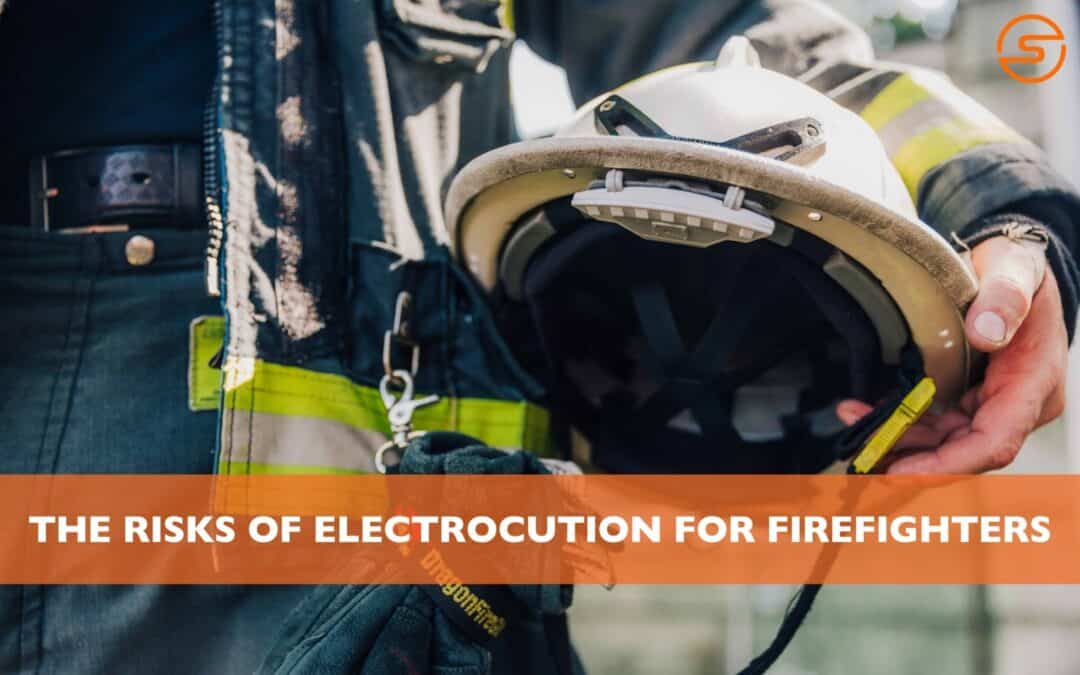Electrical hazards can come from various sources, such as downed power lines, damaged appliances, and disrupted electrical systems. For example, a firefighter responding to a house fire may encounter electrical wires that have been damaged by flames or even by the water used to extinguish the fire. If responding to a commercial building fire, damaged industrial machines or collapsed walls can expose live wires. Electric shock and electrocution are distinct possibilities if firefighters come into direct contact with these wires, particularly when picking their way through rubble or cutting through walls.
According to the National Fire Protection Association (NFPA), electrocution is one of the leading causes of firefighter deaths in the United States. Between 2010 and 2019, there were 63 firefighter deaths from electrocution. This represents about 4% of all firefighter fatalities during this period. The NFPA also reports that electrical distribution or lighting equipment was involved in 11% of firefighter deaths from 2010 to 2014.
These statistics demonstrate the seriousness of the risk of electrocution for firefighters and the dangers electrical equipment creates in responding to fires. However, some steps can be taken to minimize this risk. First and foremost, firefighters must receive proper training on electrical hazards and how to work safely around them. This training should include information on identifying electrical hazards, isolating electrical systems, and working with utility authorities to de-energize areas around a disaster site.
Secondly, firefighters should have access to the proper protective equipment and tools to work around electrical hazards safely. This includes protective gear such as gloves and boots designed to provide insulation against the electrical current, particularly in wet areas that can become energized.
One essential item of equipment that can help is a voltage detector that gives firefighters a “sixth sense” of where electrical dangers are lurking. When you are in the thick of a search and rescue operation, you must focus all your senses on your surroundings. A voltage detector that gives you visible and audible alerts of electrical hazards is invaluable.
COMPASS PVDs: Keeping Firefighters Safe
At Safeguard Equipment®, we design and manufacture personal voltage detectors (PVDs) that alert users to the presence, proximity, and location of electrical hazards. These devices are easy to use, compact, and robust, giving users 360-degree voltage and current detection. Used by utility line workers, first responders, electricians, arborists, telecom workers, and other workers exposed to electrical hazards, COMPASS PVD by Safeguard are critical PPE for anyone whose work exposes them to energized lines and equipment.
Safeguard’s latest product, the COMPASS ProTM, has additional detection features and can sense when a user has suffered a fall, head impact, or arc flash. The unit will automatically initiate communication with a designated in-house safety team via Safeguard’s proprietary Bluetooth-enabled smartphone app whenever one of these injury events occurs. This added capability ensures that injured workers receive prompt assistance whenever an injury occurs. Both the detection device and the app also have general SOS alerts that can be activated by the user, ensuring that if they need help, it is only one button away.
Electrical safety is a critical need in many professions, including firefighting. While electrocution represents a small percentage of firefighter fatalities, every one of those percentage points represents someone’s life: a dad, a mom, a son, or a sibling. Firefighters put their lives on the line to keep us safe with every task they undertake, and that risk needs to be taken seriously. At Safeguard, our mission is to help firefighters and other workers come home safely to their families every night, and COMPASS PVDs make that happen.
To find out more about COMPASS PVDs or the new COMPASS Pro, contact Safeguard Equipment today.
Views: 58

